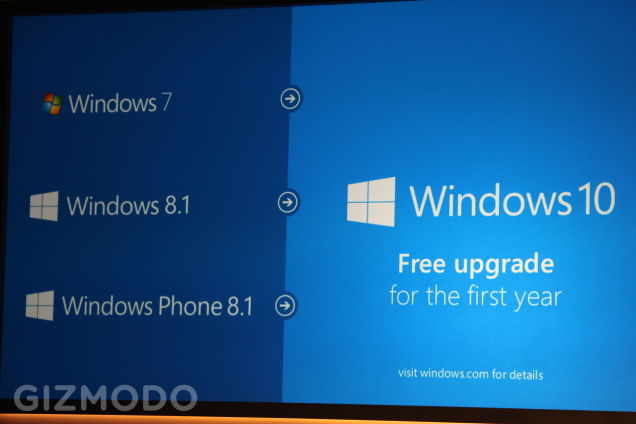So here it is: Microsoft’s next operating system is officially confirmed to be skipping a number and going straight to 10. Microsoft drew back the curtain on the operating system’s new consumer-focused features at an event on Wednesday, while simultaneously driving home a vision of an operating system designed to deliver a singular, cohesive experience across a myriad of device types. The most important piece of information here is that it’ll be a free upgrade for Windows 7 and 8 users, who can snag the operating system for nothing in the first year after Windows 10 hits the streets. Here’s what to expect.
In Windows 10, the Start menu will be able to expand to fill the full screen if you desire, for one thing. The Action Center (read: Windows 10’s notification center) is receiving improved functionality, such as Windows Phone 8.1-esque quick action buttons that let you activate features (such as Bluetooth and Wi-Fi) with a single click. Notifications in the Action Center will be able to be expanded. Microsoft also announced that its Continuum feature, which dynamically shifts the Windows 10 interface from the Modern UI to the desktop depending on whether you’re using a traditional PC or a touchscreen device, will soon appear in Windows 10 Preview builds.
Microsoft officials also demonstrated new “Universal” applications that the company is building and plans to include as a built-in part of Windows 10 on phones, tablets and PCs. Among the coming Microsoft universal applications in development are new People, Music, Maps, Photos, Calendar and Outlook applications. Microsoft officials also demonstrated “Project Spartan,” the new browser that Microsoft is building for Windows 10. During the keynote, officials demonstrated the ability to annotate Web pages in Spartan and share them with others. Cortana, Microsoft’s personal digital assistant/search technology, also will be integrated into Spartan, Microsoft officials confirmed.
During a Q&A after the keynote, CEO Satya Nadella told reporters that looking at Windows as a service doesn’t imply any changes in Microsoft’s business model. Windows as a service is all about how Microsoft services Windows, moving forward, and not about how it plans to charge for it or how it will work with its partners.

